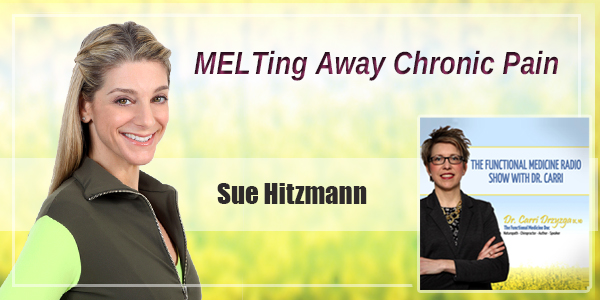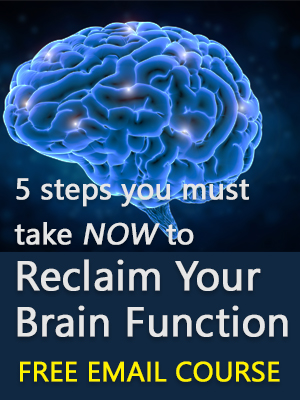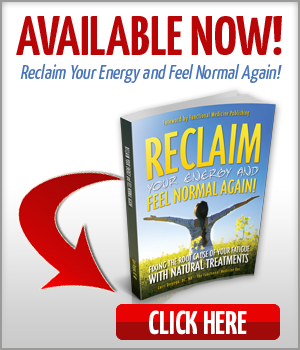Podcast: Play in new window | Download
Subscribe: Apple Podcasts | Android | RSS
In this episode of The Functional Medicine Radio Show, Dr. Carri’s special guest Sue Hitzmann explains how to MELT away chronic pain.
Sue is the creator of the MELT Method®, a revolutionary yet simple self-treatment technique that helps people get out and stay out of chronic pain. She’s a nationally recognized educator, manual therapist, exercise physiologist, and founding member of the Fascial Research Society.
Sue is the author of the book The MELT Method®: A Breakthrough Self-Treatment System to Eliminate Chronic Pain, Erase the Signs of Aging, and Feel Fantastic in Just 10 Minutes a Day!
Main Questions Asked:
- What is fascia is and why is it so important?
- Who would benefit from MELT? Who would not be a good candidate for MELT?
- What exactly is MELT? Can you explain the details?
Key Points made by Sue:
- Fascia is connective tissue outside of all the good things like your muscles, bones, and nerves plus it’s actually a vital transportation network.
- Connective tissue is actually a 3-dimensional fluid-based architectural matrix. It’s kind of like flexible scaffolding under your skin.
- It does an incredible amount for you in a day. Not only does it keep your bones, muscles, nerves, blood vessels, and even your organs stable and supported, it’s where a lot of absorption is happening, a lot of transportation of nutrients from cell to cell exists.
- What we’re really starting to look at is just how connective tissue plays a role in our overall function and understanding that daily living is causing cellular dehydration in this tissue.
- If you’ve ever sat for long periods of time and you get up and your joints feel a little stiff or you wake up in the morning and you body is stiff for the first five minutes when you get out of bed, that’s what it feels like when connective tissue is in a state of cellular dehydration.
- The biggest problem is that if you never do anything about it and it accumulates, it’s actually one of the key causes of pain becoming chronic.
- Fascia actually penetrates from the skin all the way to the bone. It’s completely inseparable. It’s like a grid. If you removed everything from your body and only left the fascia, you would actually see the entire structure of the human body and all of the compartments that those particular structures would be living in.
- Anybody can do MELT. I’ve worked on literally every disorder, disease, and dysfunction known to man that the medical field either says there’s nothing that can be done about it and offers some medicine or surgery which might help but could cause more problems.
- I’ve worked with young kids, teenage athletes, older adults, people going through chemotherapy and we’re really able to help anybody learn how to apply this self-care method from day to day to help reduce those chronic pain symptoms and we’ve seen such tremendous results over the past 10 years.
- MELT simulates the hands-on techniques that I use to eliminate accumulated stress and pain and dysfunction in my own clients.
- I developed these soft rollers that are about 3 feet in length and 5 inches in circumference. It’s a softer roller than what’s used in foam rolling.
- And I developed these soft balls and rollers to teach people how to rehydrate the connective tissue and quiet the stress reflex in the nervous system so that the body’s natural ability to rest and repair, what’s called the parasympathetic state, comes back up online.
- For people who are in chronic pain, their body’s natural rest and repair state is kind of under water and the access through connective tissue is allowing the nervous system to decrease some of that stress that’s accumulated in the body that’s causing a lot of the common pain symptoms.
- The problem with connective tissue is if you never reinstate the hydration and the fluid flow of fascia, not only are your joints starting to ache, arthritis is a much bigger issue.
- The thing about accumulated stress in connective tissue is that the nervous system and the sensory nerve endings live in connective tissue. So when the connective tissue is cellularly dehydrated, it actually causes the nervous system to increase its stress response so now you’re getting symptoms that seem completely unrelated to connective tissue. It’s not just joint pain, you’re now having trouble digesting food, you’re gaining weight, you’re feeling kind of lethargic in the middle of the day, but for as tired as you are during the day, you try to fall asleep at night, you can’t fall asleep and then you’re not staying asleep, you’re getting up in the middle of the night to go to the bathroom a number of times and this causes a catastrophic state in the body because cellular repair in our fascial system is dominant when we’re sleeping.
- If you’re not getting restful sleep, now you’re waking up with more stress accumulating in the connective tissue and that’s overstressing the nervous system. You’re already waking up with your teeter totter so tipped to the stress level, it’s just one bad thing like somebody bumping into you and you just start screaming at them. Now you got depression, anxiety, you’re grumpy all the time, you can’t have a relationship, you don’t want to go to work. Your lifestyle completely declines and these are things we don’t think of connective tissue issues but, to me, connective tissue and cellular dehydration is a cause of a lot of the symptoms that we treat in the US today and around the world with medication.
- If you get your checkup and your doctor rules out diseases, then self-care should be our very first plan of action and understanding how pain becomes chronic in the body and what causes pain to become chronic and eliminating the problem before you have pain.
- I’m trying to empower people to learn more about the process of pain and that awful pain cycle that our brain can produce and deter it from happening so we don’t have to deal with chronic pain from day to day.
- It’s almost like pain is hijacking regions of the brain that we use for emotions and movement. It really does disrupt all of those other chemical processes in the body. That is the cascade that causes pain to become a daily process in the body.
- The way that the brain works, we can actually access parts of our brain’s processes through the body instead of just doing psychotherapy and working from the mind’s level from our conscience thought. We can work into different regions of the brain to body communication systems through accessing the body.
- I’ve developed the four Rs of MELT: Reconnect, Rebalance, Rehydrate, Release.
- The first step is to draw people’s attention and get them back into their bodies because when you have pain, you just want to tune it out.
- The rebalancing techniques are ways to teach people how to actively partake in quieting the stress reflex and boosting the body’s natural repair mechanisms. It takes less than ten minutes to do it and you can literally feel your entire body revert back to a much more balanced place from where you begin the treatment.
- The rehydrate techniques are either compression or pull techniques that are global treatments. Compression and tension are what cause cellular dehydration. It’s like squeezing all of the water out of a sponge and pulling a rubber band until it loses its elastic properties.
- The fourth R of MELT is release. It’s a way to teach people how to decompress their own neck, their low back, and the joints of their hands and feet without cracking, twisting or twerking the body to do it.
- MELT is supplemental care that people can do in between massage sessions or physical therapy sessions to prolong these powerful changes that hands-on body work can do.
- MELT is just a great complement to anything from hands-on therapy to exercise activity. You’re reducing the strain in the joints, you’re improving the neurological performance and regaining that control of you being able to empower yourself to get out and stay out of chronic problems.
- We could all benefit from a little bit of self-care. Ten minutes a day goes a long way.
Resources Mentioned:
Book – Reclaim Your Energy and Feel Normal Again
Thank you for listening! If you enjoyed this podcast, please subscribe and leave a 5 star rating and review on iTunes!








